#medicinal garden
Text
8 notes
·
View notes
Text

Achieve a peaceful sleep using California Poppy, instead of relying on sleeping pills. Create your own Sleep Tea to effortlessly experience deep sleep and eliminate the difficulties of staying asleep. If you have severe sleep problems or suffer from PTSD, consider using a concentrated sleep tincture. Embrace the natural remedy of California Poppy to obtain restorative rest.
Watch the full video here: http://bit.ly/3WykXTb
#herbalism#herbal#herbal medicines#plant medicine#medicinal plants#medicinal herbs#gardening#medicinal garden#calendula#motherwort#passionflower#echinacea#tulsi#meadowsweet#southern ginseng#spilanthes#stinging nettles#wild bergamot#herbs#studyblr#college#university#science#student#studyspo#ctf#collegblr#uniblr#sciblr#chemblr
1 note
·
View note
Text

Hello everyone, I think everyone needs to have a medicinal garden in their backyard, in my opinion. In this manner, you can quickly go and choose the solution you require whenever. Even during times of crisis, when pharmacies may be shuttered or plundered, your neighborhood pharmacy will be there for you. They are offering 10 different medicinal seeds for you to plant in your backyard
If you want to learn more about this product, Click below
#herbalism#herbal#herbal medicines#plant medicine#medicinal plants#medicinal herbs#gardening#medicinal garden#calendula#motherwort#passionflower#echinacea#tulsi#meadowsweet#southern ginseng#spilanthes#stinging nettles#wild bergamot#herbs
2 notes
·
View notes
Text
Watch the full video from here: https://bit.ly/3W4UaOt
High Payouts! From the creators of The Lost Ways and The Lost Book of Remedies! Converts well on interests like health, herbalism, self-sufficiency, off-grid, gardening, DIY, survival, and others.
We created this Medicinal Garden Kit because we wanted to empower other people to take their health into their own hands.
Watch the full video from here: https://bit.ly/3W4UaOt
#herbalism#herbal#herbal medicines#plant medicine#medicinal plants#medicinal herbs#gardening#medicinal garden#calendula#motherwort#passionflower#echinacea#tulsi#meadowsweet#southern ginseng#spilanthes#stinging nettles#wild bergamot#herbs
2 notes
·
View notes
Text



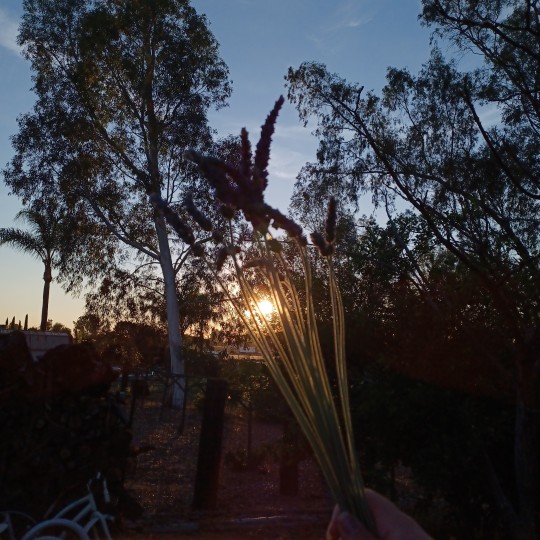

#fresh picked lavender#lavender#french lavender#gardening#medicinal gardening#medicinal garden#good medicine#green witch#witchblr
4 notes
·
View notes
Text
Exploring the Uses of Medicinal Plants: Nature's Pharmacy

Introduction to Medicinal Plants
Medicinal plants have been integral to human health and wellness for millennia, offering a treasure trove of natural remedies that continue to play a crucial role in both traditional and modern medicine. In this comprehensive exploration, we delve into the diverse uses of medicinal plants, from their historical significance to their potential future in research and innovation.
Definition and Historical Significance
Medicinal plants encompass a broad spectrum of botanical species that have been utilized for their therapeutic properties. This practice dates back to ancient civilizations, where healers and shamans discovered the healing potential of various plants, laying the foundation for herbal medicine.
Importance in Traditional and Modern Medicine
Throughout history, medicinal plants have been the cornerstone of traditional healing systems across cultures, from Ayurveda in India to Traditional Chinese Medicine (TCM) and Native American herbalism. In modern times, these plants remain vital, providing sources of active compounds for pharmaceutical drugs and serving as natural alternatives for health and wellness.
Common Medicinal Plants
Overview of Well-Known Plants (e.g., Aloe Vera, Ginseng, Turmeric)
Certain medicinal plants have gained widespread recognition for their health benefits. Aloe vera, known for its soothing properties, is used to treat burns and skin irritations. Ginseng is prized in traditional Asian medicine for its apoptogenic properties, promoting vitality and longevity. Turmeric, has potential anti-inflammatory and antioxidant effects due to its active compound curcumin.
Their Traditional and Current Uses
These plants have versatile applications. Aloe vera is used in skincare products, herbal remedies, and even beverages for its cooling and healing properties. Ginseng is incorporated into tonics and supplements to boost energy and enhance cognitive function. Turmeric finds its way into culinary dishes and dietary supplements, offering support for joint health and overall wellness.
Health Benefits of Medicinal Plants
Overview of Various Health Conditions Treated
Medicinal plants address a wide range of health conditions, spanning digestive issues, skin disorders, immune support, respiratory ailments, and more. Each plant contains unique bioactive compounds that target specific areas of health.
Examples: Digestive Issues, Skin Disorders, Immune Support
For digestive health, plants like peppermint and ginger aid in soothing upset stomachs and relieving nausea. Calendula and lavender are prized for their skin-healing properties, used in ointments and creams for eczema and wounds. Immune-boosting plants such as echinacea and elderberry are popular during cold and flu seasons.
You may try this kit for your better health through herbs.
Phytochemicals and Active Compounds
Explanation of Phytochemicals
Phytochemicals are bioactive compounds found in plants that contribute to their medicinal properties. These include polyphenols, flavonoids, alkaloids, and terpenes, each with specific health-promoting effects.
Importance of Active Compounds in Medicinal Plants
The efficacy of medicinal plants hinges on their active compounds. For instance, the polyphenols in green tea exhibit antioxidant properties, protecting cells from oxidative stress. Alkaloids like caffeine in coffee and tea contribute to their stimulating effects on the nervous system.
Antioxidant Properties
Role of Medicinal Plants in Fighting Oxidative Stress
Oxidative stress contributes to aging and disease by causing cellular damage. Medicinal plants rich in antioxidants, such as blueberries and green tea, help neutralize free radicals and reduce oxidative damage.
Examples of Plants with High Antioxidant Content
Berries like goji and acai are celebrated for their antioxidant-rich profiles, offering protection against chronic diseases like heart disease and cancer. Turmeric, with its potent curcuminoids, also exhibits strong antioxidant effects.
Anti-inflammatory Effects
How Medicinal Plants Reduce Inflammation
Inflammation underlies many chronic diseases, from arthritis to cardiovascular conditions. Medicinal plants like ginger, turmeric, and willow bark contain compounds that inhibit inflammatory pathways, offering natural relief without the side effects of conventional anti-inflammatory drugs.
Plant Examples (e.g., Ginger, Turmeric, Willow Bark)
Gingerols in ginger and curcumin in turmeric are known for their anti-inflammatory properties, making them popular choices for joint pain and muscle soreness. Willow bark contains salicin, a precursor to aspirin, which eases pain and reduces inflammation.
This kit may help you to maintain your health better through herbs.
Digestive Health
Medicinal Plants for Digestive Disorders
Plants like peppermint, chamomile, and fennel seeds are used to alleviate digestive discomfort, including bloating, indigestion, and irritable bowel syndrome (IBS). These herbs promote healthy digestion and soothe gastrointestinal distress.
Natural Remedies for Common GI Issues
Peppermint oil relaxes intestinal muscles, easing spasms and discomfort. Chamomile tea reduces inflammation in the gut lining, while fennel seeds aid in digestion and reduce gas.
Immune System Support
Plants That Boost Immunity
Echinacea, garlic, and astragalus are renowned for their immune-enhancing properties. These plants stimulate the immune response and help the body fend off infections.
Apoptogenic Plants and Their Role
Apoptogenic herbs like ashwagandha and holy basil help the body adapt to stress, which indirectly supports immune function by reducing the negative impact of stress hormones on immunity.
Skin Care and Healing
Use of Plants in Skincare Products
The beauty industry incorporates medicinal plants into skincare formulations for their nourishing and healing effects. Aloe vera gel, shea butter, and rosehip oil are popular ingredients in natural skincare products.
Healing Properties of Medicinal Plants for Skin Conditions
Calendula soothes inflamed skin and promotes wound healing. Tea tree oil is used for its antibacterial properties in treating acne. Rosemary extract acts as a natural preservative and antioxidant in cosmetic products.
Pain Relief
Natural Pain-Relieving Properties of Plants
Plants like cannabis, willow bark, and capsaicin (from chili peppers) are effective pain relievers. They work through various mechanisms to alleviate pain without the adverse effects of opioids.
Comparison with Pharmaceutical Options
Medicinal plants offer a gentler alternative to pharmaceutical painkillers, with fewer side effects and a lower chance of addiction. For chronic pain management, herbal remedies provide sustainable relief.
Stress and Anxiety Management
Plants for Calming Effects
Lavender, passionflower, and valerian root are used to reduce stress and anxiety. These plants have sedative properties that promote relaxation and improve sleep quality.
Role of Herbal Teas and Aromatherapy
Herbal teas infused with chamomile or lemon balm have calming effects on the nervous system. Essential oils like lavender and bergamot used in aromatherapy alleviate stress and uplift mood.
Cardiovascular Health
Plants for Heart Health
Hawthorn, garlic, and flaxseed are beneficial for cardiovascular health. They support healthy blood pressure, cholesterol levels, and overall heart function.
Impact on Blood Pressure and Cholesterol Levels
Garlic contains allicin, which helps lower blood pressure and cholesterol. Hawthorn berries improve blood flow to the heart and strengthen its contractions.
Respiratory Health
Medicinal Plants for Respiratory Issues
Eucalyptus, peppermint, and thyme are valued for their respiratory benefits. They relieve congestion, soothe coughs, and support lung health.
Examples: Eucalyptus, Peppermint, Thyme
Eucalyptol in eucalyptus oil acts as a natural decongestant, while menthol in peppermint oil opens airways and relieves sinus pressure. Thyme contains thymol, an expectorant that loosens phlegm.
Cancer Prevention and Support
Role of Medicinal Plants in Cancer Prevention
Certain plants like turmeric, green tea, and berries possess anti-cancer properties. They inhibit tumor growth and protect cells from oxidative damage.
Complementary Use with Conventional Treatments
Medicinal plants complement conventional cancer treatments, helping to manage side effects like nausea and fatigue. They may also enhance treatment efficacy and improve overall quality of life.
Women’s Health
Plants for Menstrual Issues and Menopause Symptoms
Black cohosh, dong quai, and chaste berry are used to alleviate menstrual cramps and menopausal symptoms. These herbs regulate hormonal balance and support reproductive health.
This guide may also help you to keep yourself fit through nature.
Safety and Efficacy Considerations
While herbal remedies can be effective, it's essential to consult with a healthcare provider, especially during pregnancy or when managing chronic conditions. Proper dosage and quality control are crucial for safety.
Memory and Cognitive Function
Plants That Enhance Brain Health
Ginkgo biloba, bacopa, and gotu kola are known for their cognitive-enhancing effects. They improve memory, concentration, and overall brain function.
Impact on Memory and Concentration
Ginkgo biloba increases blood flow to the brain, enhancing cognitive performance. Bacopa monnieri supports neurotransmitter function, improving memory retention and mental clarity.
Metabolic Health
Plants That Support Metabolism
Cinnamon, bitter melon, and fenugreek aid in metabolic health. They regulate blood sugar levels, promote insulin sensitivity, and support weight management.
Effects on Weight Management
Green tea catechins and capsaicin from chili peppers boost metabolism and promote fat burning. These plants are valuable additions to a healthy diet and exercise routine.
Sustainability and Ethical Harvesting
Importance of Responsible Sourcing
As demand for medicinal plants grows, sustainable harvesting practices are vital to preserve biodiversity and protect natural habitats. Ethical sourcing ensures the long-term viability of medicinal plant resources.
Promoting Biodiversity and Conservation
Cultivation of medicinal plants through organic farming and wildcrafting supports ecosystem health and maintains genetic diversity. Conservation efforts safeguard endangered species and promote sustainable use.
Cultural and Ritual Uses
Traditional Practices Involving Medicinal Plants
Medicinal plants hold cultural significance in rituals and ceremonies worldwide. Indigenous cultures have preserved ancient healing traditions centered around plant-based medicine.
Significance in Various Cultures
For example, Ayahuasca, a psychoactive plant brew, is used by Amazonian tribes for spiritual healing and enlightenment. Native American tribes employ sage and cedar for purification rituals.
Future of Medicinal Plant Research
Trends in Herbal Medicine
Advancements in technology and scientific research are uncovering new applications for medicinal plants. Phytopharmaceuticals and herbal supplements continue to gain popularity in mainstream healthcare.
Potential Discoveries and Innovations
Research on plant genomics, bioavailability of phytochemicals, and synergistic effects of herbal combinations offer promising avenues for novel therapies. The future holds exciting prospects for harnessing the full potential of medicinal plants.
Conclusion
The multifaceted uses of medicinal plants span ancient traditions to cutting-edge research, demonstrating their enduring relevance in promoting health and well-being. As we navigate an era of holistic healthcare, incorporating these natural remedies into our lifestyles fosters a harmonious relationship with nature and unlocks the profound healing potential of botanical medicine.
Here you may try this kit for your health care through herbs.
Wish you the best of your health!
DISCLAIMER:
Some of the links in this article are affiliate links, which means I may earn a commission if you purchase through those links.
#health tips#Nature's Pharmacy#uses of medicinal plants#myherbal#herbal garden#Chicory Coffee#Quick Backyard Remedy#Medicinal Garden#Herbal Medicine#herbalism#health and wellness
1 note
·
View note
Text
Harnessing Nature’s Bounty: The Power of Medicinal Herbs
I think everyone should have a medicinal garden in their backyard. This way you can easily go and pick the remedy you need at any time. Your backyard pharmacy will be there for you even in times of crisis when pharmacies might be closed or looted. I’ve gathered all the seeds for 10 herbs, inside the Medicinal Garden Kit. All these seeds have been handpicked from the very best plants, as I wanted nothing less than premium quality seeds.
#medicine garden#medicinal herbs#medicinal plants#medicinal mushrooms#medicinal garden#medicinal chemistry#photography#medicine gardening#medicinal gardening#medicinal gardening kit#gardening kit#natural healing
0 notes
Text
Develop Your Own Medication: Revealing the Restorative Nursery Pack
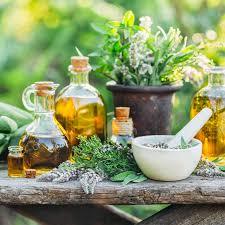
Feeling overpowered by a speedy world? Imagine a scenario in which you could make an individual safe-haven just external your entryway, overflowing with regular cures. Welcome to the Restorative Nursery Pack - a helpful method for developing your own mending sanctuary at home.
A Green Desert garden Readily available
A Restorative Nursery Unit is an organized box loaded up with seeds, plants, and supportive advisers for kick you off developing your own therapeutic spices. Envision fragrant lavender, quieting chamomile, and resistant supporting echinacea thriving in your terrace - all promptly accessible for regular recuperating. These units frequently incorporate well known spices close by establishing directions, developing tips, and clarifications of each plant's restorative purposes.
For what reason You'll Cherish a Restorative Nursery Pack
Normal Cures on Request: Trench the pharmacy! With a therapeutic nursery, you have a new stockpile of mending spices for teas, colors, ointments, and that's just the beginning. Alleviate a resentful stomach with quieting chamomile tea or straightforwardness stress with fragrant lavender.
Financial plan Cordial Wellbeing: Developing your own spices is a savvy option in contrast to costly enhancements and meds. Furthermore, numerous restorative plants are low-upkeep, making them a supportable and reasonable way to better wellbeing.
Reconnect with Nature: There's a remedial thing about sustaining life. Planting, tending to, and collecting your spices is an establishing experience that advances mental and close to home prosperity. It's an opportunity to interface with nature and witness the sorcery of development firsthand.
Embrace Manageability: You're doing your part for the climate by becoming your own! By keeping away from financially created spices that may be treated with synthetic substances, you're selecting a greener arrangement. In addition, your assorted nursery upholds nearby environments.
To Get Medicinal Garden Kit CLICK HERE

Sowing the Seeds of Health: Beginning
Anybody can make a Therapeutic Nursery, paying little mind to experience or space! Here is a speedy aide:
Pick Your Plants: Exploration different therapeutic spices to track down those that suit your environment, soil, and space. Consider daylight needs, watering prerequisites, and plant sizes while making your choices.
Set up Your Nursery Bed: Pick a bright, very much depleted spot in your nursery, or select compartments for porches or galleries. Correct the dirt with natural matter for better seepage and development. Guarantee appropriate dividing between plants for ideal wellbeing.
Plant Power!: Adhere to the directions in your unit or seed bundles to establish your spices. Water them routinely and add mulch around the base to hold dampness and ward weeds off.
Sustain and Collect: As your spices mature, care for them with watering, periodic pruning, and normal manures. Watch out for irritations and sicknesses, and address them immediately. When prepared, gather your spices for use in teas, cures, cooking, or fragrant healing.
To Get Medicinal Garden Kit CLICK HERE
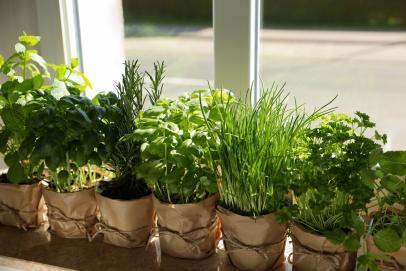
Develop Your Wellbeing Starting from the earliest stage
The Restorative Nursery Unit enables you to bridle the recuperating force of nature and develop an association with the normal world. By developing your own therapeutic spices, you get to a gold mine of normal arrangements, advance generally prosperity, and make a shelter of harmony and concordance in your life. In this way, take care of business, embrace the sorcery of the nursery, and support your body, psyche, and soul with the force of plants.
DISCLAIMER:
There is an affiliate link of a best product in this article which may make some profit for me.
#garden#medicinal garden#plants health#garden care#plants#plants growth#medicinal garden kit#medicinal kit#nursery
0 notes
Text
#gardening#herbs#natural medicine#plant medicine#organic medicine#medicinal garden#medicinal garden kit#plants medicinal garden#top 10 medicinal plants and their uses
1 note
·
View note
Text
Manish quadrupled his horticultural pay by developing natural and restorative plants.
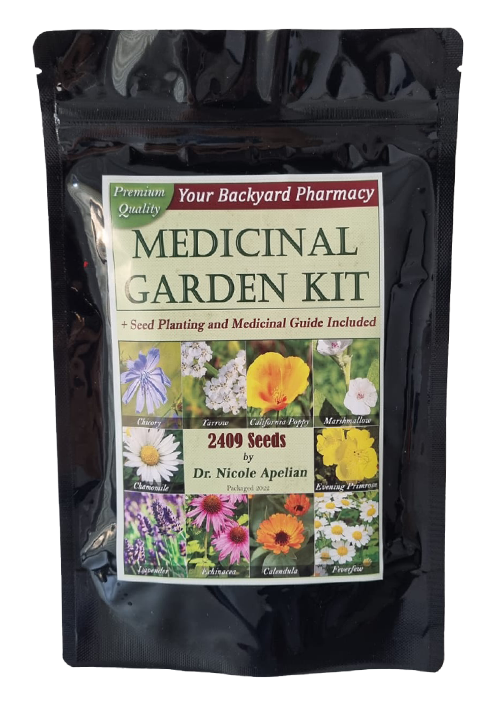
You can buy this unique product medicinal garden kit 👈
To make horticulture a beneficial business and satisfy the public authority's goal of multiplying the farming pay in five years, Manish Dubey, an occupant of Khadra of Bahoriband improvement block of Katni region, has left the customary development of wheat and urad and began developing restorative harvests in natural way. Farming pay has quadrupled because of creation. Manish Dubey, child of resigned Officer Smash Sewak Dubey, in the wake of concentrating on till BA, chose to take up yield of restorative plants separated from conventional cultivating. With all his diligent effort and devotion, he has expanded the pay from customary cultivating from Rs 30 to Rs 32 thousand for each hectare to Rs 1 lakh 11 thousand for every hectare through restorative harvests. Presently he is getting a yearly pay of Rs 10 to 12 lakh from his superior cultivating.

Youthful rancher Manish Dubey expresses that in customary cultivating, by creating 15 quintals for every hectare of wheat and 6 quintals for each hectare of Zaid crop Urad, one could procure just Rs 30 to 32 thousand for each hectare in a year. In the wake of taking part in the exercises of Agriculture and Food Handling Division and Horticulture Preparing cum Visit Program, I came to realize that benefit can be acquired by developing restorative plants in my region. Assembled more data in regards to the development of restorative harvests and established Citronella crops in 10 sections of land of land taken by him in Sikmi, Lemon Grass in 4 sections of land, Palmarosa in 2 sections of land, Metha in 2 sections of land and Stevia (Sweet Basil) in 1 section of land. . Aside from this, natural cultivating of urad in paddy was likewise finished in some land for homegrown use. Natural manures and composts were additionally utilized rather than substance composts.
Manish Dubey told that because of extremely less necessity of synthetic manures and pesticides in restorative plants, the expense likewise descends and by establishing the harvest once, creation can be taken for the following three years. The expense of restorative plants crop was Rs 40 thousand for every hectare in the principal year itself. While the primary year's benefit was Rs 1 lakh 10 thousand for each hectare. Before very long, just benefit will be accomplished because of cost decrease. On the subject of market and offer of restorative plants, Mr. Dubey expresses that because of contact cultivating the interest for restorative yields and sweet-smelling oils on the lookout, his therapeutic harvests are sold promptly on the lookout. Development of therapeutic yields with natural and cutting edge innovation is likewise a simple and most ideal way to increment horticultural pay.
You can try this unique product medicinal garden kit 👈
Disclaimer :
This post contains affiliate links. If you use this links to buy something we may earn a commission. Thanks.
#How to grow plants#plant photography#plantas#farmers market#farming#medicinal plants#medicinal mushrooms#medicinal garden kit#medicinal garden#Plant growing#Plant blog
0 notes
Text
The Medicinal Garden Kit
The Medicinal Garden Kit
In today's fast-paced world, where stress and health concerns are prevalent, the concept of self-sufficiency and holistic wellness is gaining significant traction. One avenue towards achieving this is through the cultivation of a medicinal garden kit. This article will delve into the nuances of creating and maintaining such a kit, exploring its components, benefits, and the process of setting it up.
You can also try this product:The Medicinal Garden Kit
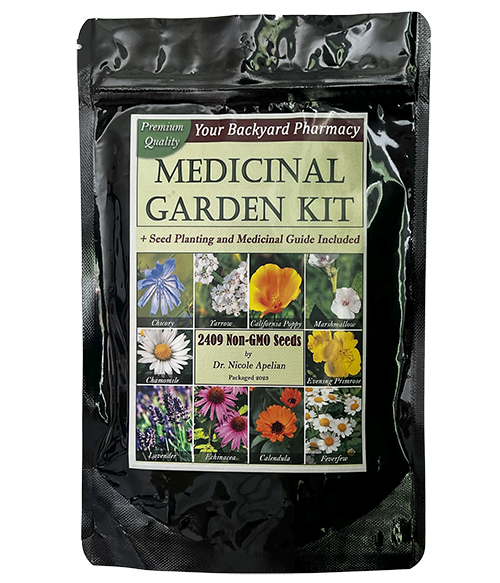
I. Introduction
A. Definition of a medicinal garden kit
A medicinal garden kit encompasses a curated selection of herbs and plants known for their therapeutic properties. It provides individuals with the means to cultivate their own natural remedies at home, fostering a deeper connection with nature and promoting self-care practices.
B. Importance of growing medicinal plants at home
In an era dominated by pharmaceuticals, the resurgence of interest in herbal medicine underscores a growing recognition of the value of traditional healing practices. Cultivating a medicinal garden at home not only ensures a readily available supply of fresh herbs but also empowers individuals to take charge of their health in a sustainable and natural manner.
II. Components of a Medicinal Garden Kit
A. Selection of medicinal plants
Careful consideration must be given to the choice of plants included in a medicinal garden kit. Opt for a diverse range of herbs with proven therapeutic properties, such as lavender for relaxation, peppermint for digestion, and chamomile for stress relief.
B. Soil and potting mix
The foundation of a successful medicinal garden lies in its soil quality. Choose a well-draining potting mix rich in organic matter to provide optimal conditions for plant growth and vitality.
C. Gardening tools
Basic gardening tools such as trowels, pruners, and watering cans are indispensable for tending to a medicinal garden. Invest in high-quality implements to ensure ease and efficiency in maintenance tasks.
D. Maintenance essentials
Regular upkeep is essential for the health and productivity of a medicinal garden. This includes tasks such as watering, fertilizing, and pest control, all of which contribute to the overall well-being of the plants.
III. Benefits of Having a Medicinal Garden Kit
A. Access to fresh medicinal herbs
Having a medicinal garden kit at home affords immediate access to fresh herbs, allowing for the preparation of potent remedies without the need to rely on store-bought alternatives.
B. Cost-effectiveness
Growing medicinal plants at home can result in significant cost savings compared to purchasing commercial products. With minimal investment in seeds and gardening supplies, individuals can cultivate a bountiful supply of herbs at a fraction of the cost.
C. Sustainable and eco-friendly
By cultivating their own medicinal garden, individuals contribute to sustainability efforts by reducing reliance on mass-produced, packaged goods and minimizing their carbon footprint.
D. Educational opportunity
A medicinal garden kit provides a valuable educational opportunity, allowing individuals to deepen their understanding of plant medicine, herbal lore, and sustainable gardening practices.
IV. How to Set Up a Medicinal Garden Kit
A. Choosing the right location
Select a sunny spot with well-drained soil for optimal plant growth. Consider factors such as sunlight exposure, proximity to water sources, and protection from strong winds.
B. Planting and arranging the garden
Carefully plan the layout of the garden, taking into account the specific needs and growth habits of each herb. Group plants with similar requirements together to facilitate maintenance and maximize space.
C. Caring for the plants
Maintain a regular watering schedule, ensuring that the soil remains evenly moist but not waterlogged. Monitor for signs of pests or disease and take prompt action to address any issues.
D. Harvesting and utilizing the herbs
Harvest herbs at their peak potency for maximum therapeutic benefit. Explore various methods of preservation, such as drying or tincture-making, to extend the shelf life of harvested herbs and expand their medicinal applications.
You can also try this product:The Medicinal Garden Kit
V. Conclusion
A. Recap of the benefits
A medicinal garden kit offers a myriad of benefits, including convenient access to fresh herbs, cost-effectiveness, sustainability, and educational enrichment.

B. Encouragement to start a medicinal garden kit
In conclusion, the cultivation of a medicinal garden kit represents a tangible step towards self-sufficiency, holistic wellness, and environmental stewardship. Whether for culinary use, therapeutic purposes, or simply the joy of gardening, embarking on this journey promises a wealth of rewards for both body and soul.
DISCLAIMER
There are an affliate link of a best peoduct in this article which may make some profit for me.
#medicinal garden kit#medicinal garden kit reviews#medicinal garden kit review#buy medicinal garden kit#medicinal garden kit usa#medicinal garden kit work#medicinal garden kit us#medicinal herb garden kit#medicinal herb garden#medicinal garden#my medicinal garden#medicinal herb garden seed kits#medicinal garden for beginners#medicinal garden kit 2023#medicinal garden kit nicole apelian#medicinal garden kit - brand new!#medicinal garden kit official website#General hashtags:#medicalgardenkit#growyourownmedicine#herbalremedies#naturalhealing#holistichealth#gardening#plants#herbs#flowers#nature
0 notes
Video
youtube
🌿 MEDICINAL GARDEN KIT REVIEW “NICOLE APELIAN” ⛔(NEW WARNING 2024) ⛔🌿 MEDICINAL GARDEN KIT WORK?
#youtube#medicinal garden kit review#medicinal garden kit reviews#medicinal garden kit#medicinal garden kit usa#buy medicinal garden kit#medicinal garden kit work#medicinal herb garden kit#medicinal garden kit us#medicinal seed kit#my medicinal garden#medicinal herb garden#medicinal garden#medicinal plant kit#medicinal garden kit - brand new!#medicinal garden kit nicole apelian#medicinal herb garden seed kits#medicinal garden for beginners#medicinal garden kit 2023
1 note
·
View note
Photo
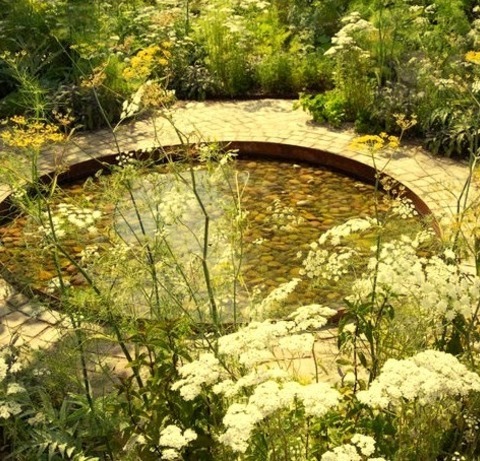
Pond in London
Inspiration for a small farmhouse's summertime stone pond in the backyard, which can withstand drought.
0 notes
Text
youtube
Starting seeds in water jugs. Pennsylvania garden prep 1/28/24
Starting seeds in water jugs. Pennsylvania garden prep 1/28/24
Today we are starting.
Chamomile - Matricaria Recutita
Yarrow - Achillea Millefolium and Achillea Filipendulina
Bee Balm or Wild Bergamot - Monarda Fistulosa
Mint - Mentha
Lavender - Lavandula Vera
Elecampane or Horse heal - Inula Helenium . (not shown in video, missing footage)
Purslane - Portulaca Oleracea
Mullein - Verbascum Thapsus
Pennsylvania Smartweed - Polygonum Pensylvanicum
Disclaimer This information is provided for informational purposes only and is not meant to diagnose, treat or prevent disease. Consult a medical professional for any health concerns and always do your own research before consuming or trying anything new to you.
#pennsylvania#pennsylvaniaplants#future garden plants#gardners#garden project#garden plants#gardening#garden#native plants#plants#seed starting#seeds#heirloom seeds#medicinal garden#herbs#youtube#Youtube
0 notes
Text
Your Natural Solution for Restorative Sleep

Achieve a peaceful sleep using California Poppy, instead of relying on sleeping pills. Create your own Sleep Tea to effortlessly experience deep sleep and eliminate the difficulties of staying asleep. If you have severe sleep problems or suffer from PTSD, consider using a concentrated sleep tincture. Embrace the natural remedy of California Poppy to obtain restorative rest.
Watch the full video here: http://bit.ly/3WykXTb
#herbalism#herbal#herbal_medicines#plant_medicin#medicinal plant s#medicinal herbs#gardening#medicinal garden#calendula#motherwort#passionflower#echinacea#tulsi#meadowsweet#southern ginseng#spilanthes#stinging nettles#wild bergamot#herbs#studyblr#college#university#science#student#studyspo#ctf#collegblr#uniblr#sciblr#chemblr
0 notes
Text
A Complete Natural Pharmacy in Your Backyard
You always want to have a quick and reliable way to stop a wound from bleeding and help prevent infection. Yarrow does both, and it really saved my knuckle. On day 42 of Alone, I accidentally cut my hand while gutting a fish. The wound was very deep and most likely would have gotten infected since I had no antibiotics with me. Luckily, I found some yarrow and wrapped it around the wound. The bleeding stopped in minutes, and my wound healed so well that now there’s barely a scar left. Since then, I always carry a pouch of dried yarrow with me, just in case. A yarrow tincture, when applied to your skin, acts as a natural and effective way to repel mosquitos and other insects.

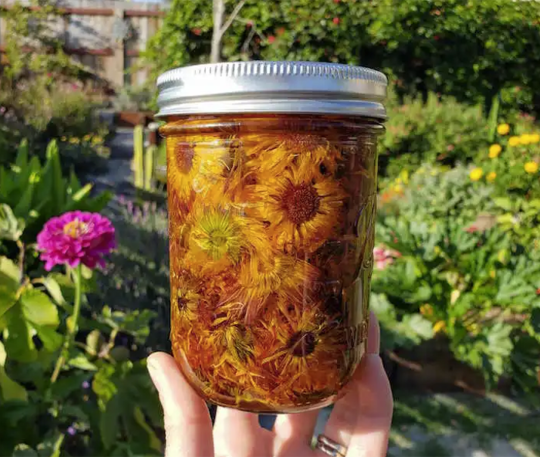
With your Medicinal Garden Kit, you’ll always have one reliable, safe, and completely free natural alternative within easy reach. All 10 of these healing plants are good companions for vegetables and fruit trees, but you can also plant them in the front yard if you wish. Most of the medicinal herbs found in the kit are perennials that die in the winter and re-emerge in the spring or self-seeding annuals that become well established after the first year.
#medicinal garden kit#medicinal garden kit review#medicinal garden kit reviews#buy medicinal garden kit#medicinal garden kit work#medicinal garden#medicinal garden kit us#medicinal herb garden kit#medicinal garden kit usa#medicinal herb garden seed kits#medicinal herb garden#my medicinal garden#medicinal garden kit - brand new!#medicinal garden for beginners#medicinal garden kit 2023#medicinal seed kit#medicinal garden kit 2022
1 note
·
View note